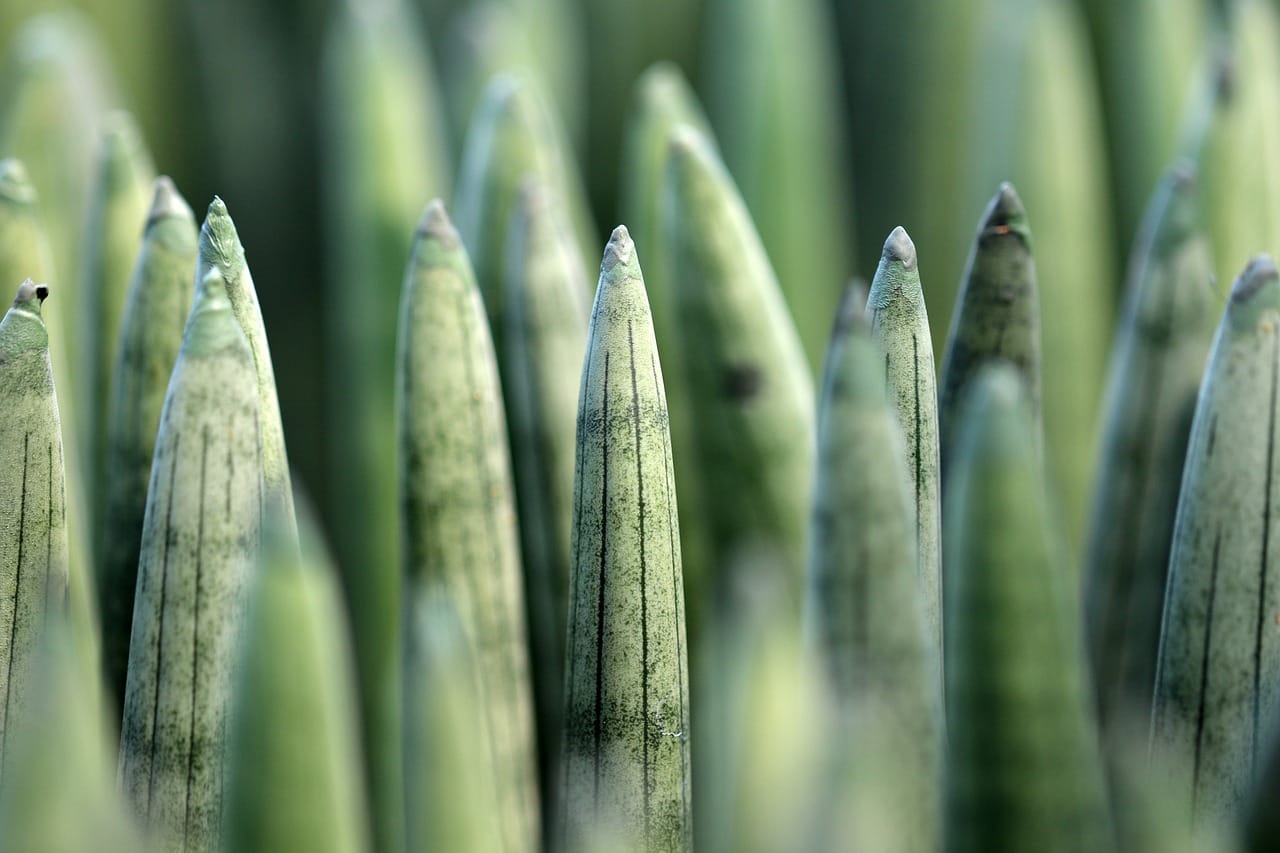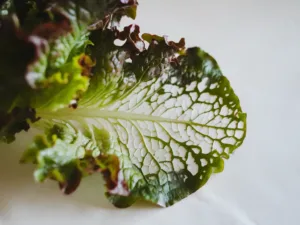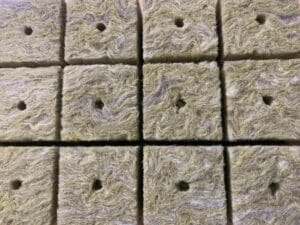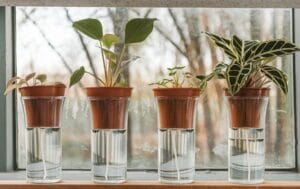Sansevieria, better known as snake plant or mother-in-law’s tongue, is one of the most popular houseplants worldwide—and for good reason. These resilient plants are not only beautiful to look at but also extremely easy to care for and hardy. They are perfect for people who have little time or lack a “green thumb.”
An exciting method to cultivate Sansevieria is hydroponics. In this method, plants grow not in soil but in a nutrient solution that provides everything they need to thrive. The benefits? Easier care, fewer pest problems, and consistently optimal water supply. Let’s take a closer look at how you can successfully grow your Sansevieria in hydroponics.
Which Sansevieria is Right for You? – Choosing the Right Variety
Sansevieria comes in many different shapes and sizes, so there’s a perfect plant for every taste and space. Here are some popular varieties that are particularly well-suited for hydroponics, depending on growth height, leaf structure, and color variations:
| Variety | Growth Height | Leaf Structure | Color Variations | Ideal For |
|---|---|---|---|---|
| Sansevieria trifasciata ‘Laurentii’ | Medium (60-100 cm) | Upright, broad | Dark green with yellow edges | Living rooms, offices |
| Sansevieria cylindrica | Tall (up to 150 cm) | Cylindrical, thick | Dark green | Large spaces, entrances |
| Sansevieria ‘Moonshine’ | Medium (60-80 cm) | Broad, slightly wavy | Light green, silvery tones | Modern interiors |
| Sansevieria ‘Hahnii’ | Low (20-30 cm) | Rosette-like, compact | Dark green with light stripes | Shelves, desks |
| Sansevieria ‘Black Coral’ | Medium (60-90 cm) | Upright, narrow | Dark, almost black green | Low-light rooms |
Why is Choosing the Right Variety Important?
Choosing the right Sansevieria variety depends on several factors, such as available space and light conditions. Smaller varieties like ‘Hahnii’ are ideal for desks or shelves, while large, upright varieties like ‘Cylindrica’ make an impressive statement in entryways or large living spaces. The different leaf structures and color variations also contribute to aesthetic diversity.
Suitable Hydroponic Systems for Sansevieria
Sansevieria are known for their adaptability and robustness, making them ideal candidates for various hydroponic systems. Here are some of the best systems to consider for growing Sansevieria in hydroponics:
- Kratky Method: This is a passive hydroponic method without a pump, ideal for beginners. The plant is placed in a container with a nutrient solution, and the roots absorb the nutrients directly. It is simple, cost-effective, and requires little maintenance.
- Wick System: In this method, a wick is used to transport the nutrient solution from a reservoir to the plant’s roots. It is also a very simple method and works well for smaller Sansevieria varieties.
- Ebb and Flow System: This system is particularly suitable for larger Sansevieria plants. It is a bit more complex but provides excellent oxygenation of the roots and even distribution of nutrients.
The choice of the right system depends on your experience, available space, and budget. Each system has its pros and cons, but all can achieve excellent results.
How Your Sansevieria Grows in Hydroponics
Transitioning a Sansevieria from soil to hydroponics is a straightforward process but involves a few key steps:
- Preparing the Plant: Carefully remove the Sansevieria from its pot and remove as much soil as possible from the roots. Rinse the roots under lukewarm water to remove all soil residues.
- Preparing the Roots: Trim any damaged or rotten roots. Ensure the roots are healthy before transferring them to hydroponics. This helps keep the plant healthy and prevents rot.
- Placing the Plant in the Hydroponic System: Place the plant in the chosen hydroponic system and fill it with a suitable substrate like expanded clay or perlite. Ensure the roots are well-distributed and have a firm hold.
Tips for Transitioning
- Patience is key. Sansevieria are tough, but they need some time to adjust to hydroponics.
- Start with a weak nutrient solution and gradually increase the concentration to avoid overwhelming the roots.
The Right Substrate for Sansevieria in Hydroponics
The substrate is an important component of the hydroponic system as it stabilizes the plant and allows for adequate oxygen supply to the roots. The following substrates are particularly well-suited for Sansevieria:
- Expanded Clay: Lightweight and reusable, provides good aeration and water retention.
- Perlite: Very light and excellent for water drainage, ideal for moisture-sensitive plants.
- Seramis: Stores water and nutrients well and releases them as needed.
Each of these substrates has its advantages, and the choice depends on your system and personal preferences. Be sure to clean the substrate regularly to prevent deposits.
Optimal Temperature for Healthy Growth
Sansevieria prefer a room temperature between 18 and 27 degrees Celsius. They are very tolerant of temperature fluctuations but should be protected from cold drafts or extremely hot temperatures. A consistent temperature helps keep the plant healthy and growing optimally.
Tips for Temperature Control
- Keep the plant away from air conditioners or heaters to avoid extreme temperature fluctuations.
- In colder months, it may be helpful to place the plant on a warmer windowsill to maintain a stable temperature.
How Much Light Does Your Sansevieria Need?
Sansevieria are very adaptable when it comes to light. They can thrive in both bright, indirect light conditions and semi-shaded areas. However, direct sunlight for extended periods can burn the leaves.
Tips for the Ideal Location
- A location with bright, indirect light is ideal.
- Avoid placing the plant directly in the midday sun, especially during the summer months.
- Artificial light can be a good alternative in darker rooms. A simple LED grow light is often sufficient.
pH and EC Values in Hydroponics
The pH value of the water in your hydroponic system should be between 5.5 and 6.5 for Sansevieria. An incorrect pH value can significantly impair the plant’s nutrient uptake. The EC value (electrical conductivity), which measures the nutrient concentration in the water, should be in the range of 1.0 to 1.5 mS/cm.
How to Measure pH and EC Values
- Use a simple pH meter and an EC meter. These are available at most garden centers or online.
- Check the pH and EC values at least once a week to ensure they are within the optimal range.
Nutrient Supply: Proper Fertilization for Your Sansevieria
Sansevieria require a balanced nutrient solution in hydroponics that contains all essential macro and micronutrients. A general hydroponic nutrient solution specifically designed for houseplants is a good choice.
Fertilization Tips
- Start with half the recommended dose and gradually increase it to avoid over-fertilizing the plant.
- Change the water and nutrient solution every 2-4 weeks to prevent deposits and mineral buildup.
Diseases and Pests in Sansevieria: Prevention and Control
Sansevieria are hardy plants, but they can occasionally be affected by diseases and pests. Common problems include root rot, spider mites, and thrips.
Prevention and Control
- Root Rot: Avoid waterlogging and ensure the substrate is well-aerated.
- Spider Mites: Maintain moderate humidity and occasionally spray the leaves with water.
- Thrips: Use yellow sticky traps and regularly check the plant for infestation.
Sansevieria-Specific Tips: Easy Care
Sansevieria are particularly easy to care for in hydroponics, but a few additional tips can help you keep your plant even healthier and happier:
- Regular Root Checks: Ensure the roots remain healthy and show no signs of rot.
- Cleaning the Leaves: Regularly wipe the leaves to remove dust that could interfere with photosynthesis.
- Repotting Every 1-2 Years: Even in hydroponics, the plant should occasionally be moved to fresh substrate.
Sansevieria in Hydroponics – An Easy Choice for Every Plant Lover
Keeping Sansevieria in hydroponics is a fantastic way to enjoy the ease of care and beauty of these plants without worrying about soil or frequent watering. With the right tips and tricks, any plant lover—whether beginner or pro—can grow their own healthy and robust Sansevieria in hydroponics. Give it a try and see how easy it can be!







